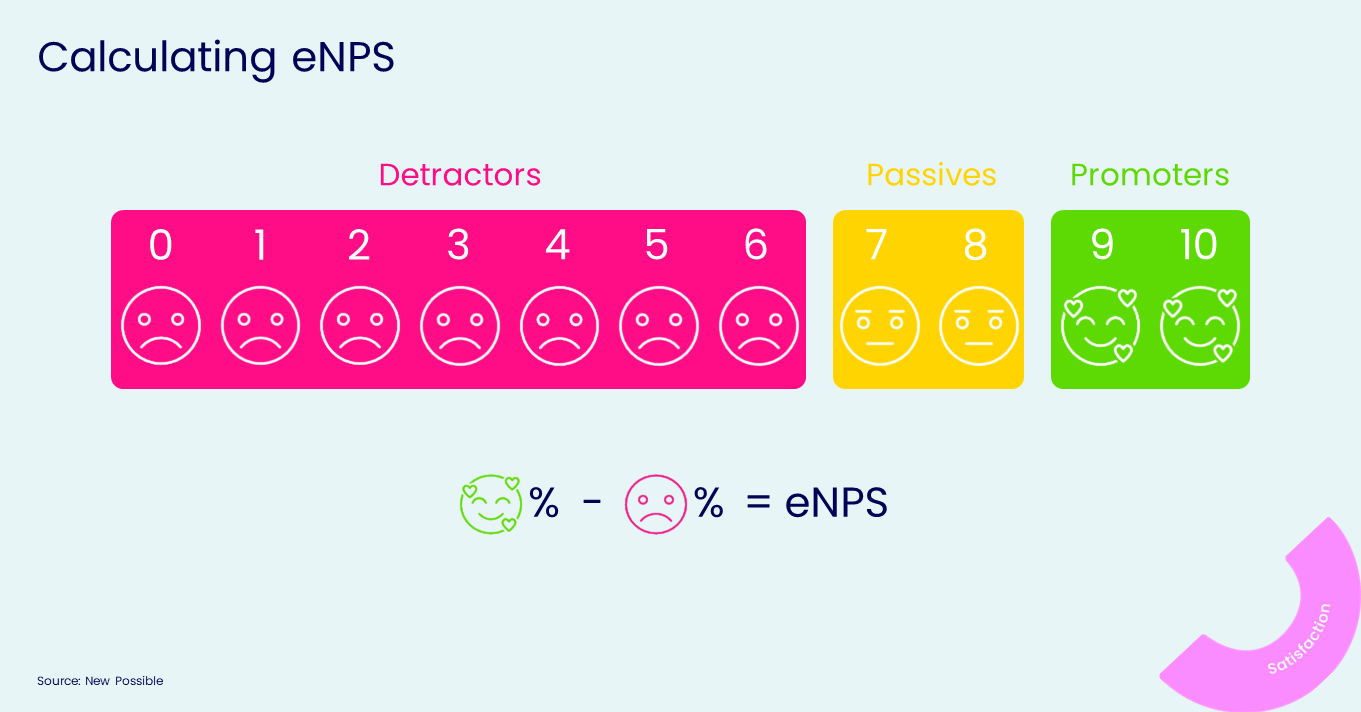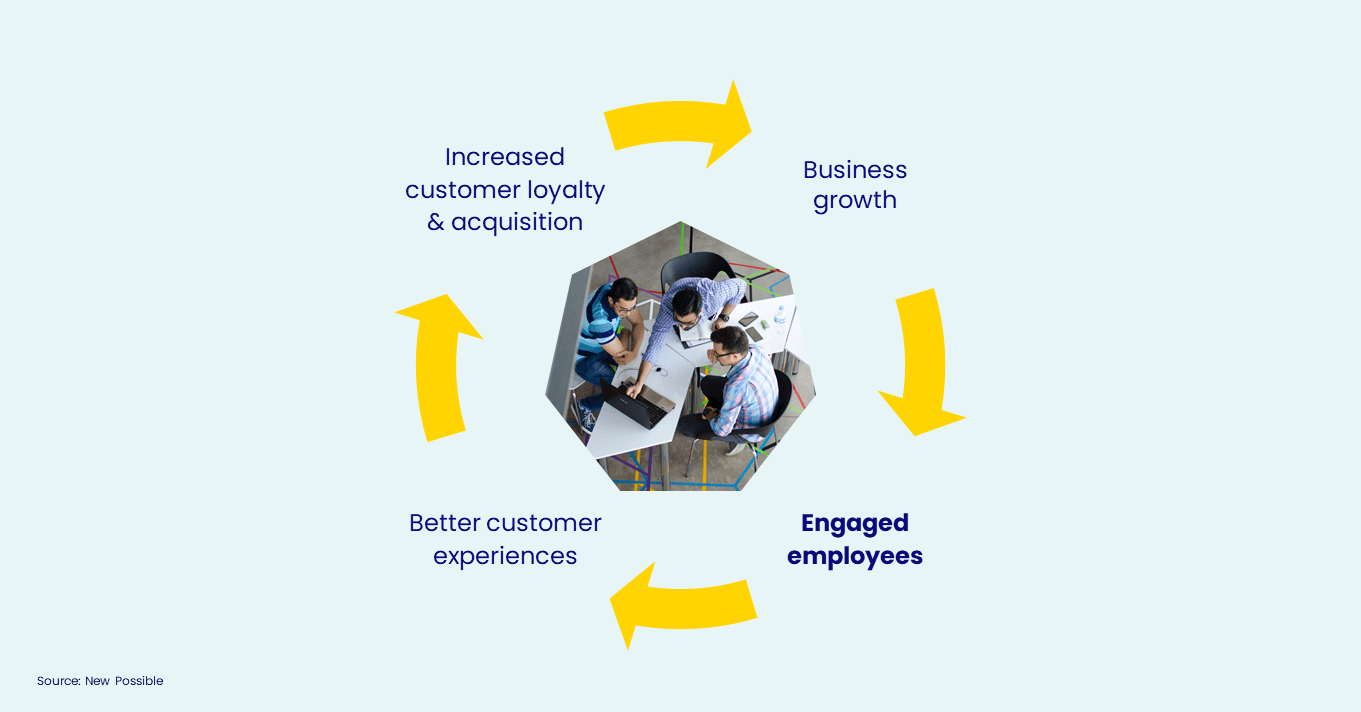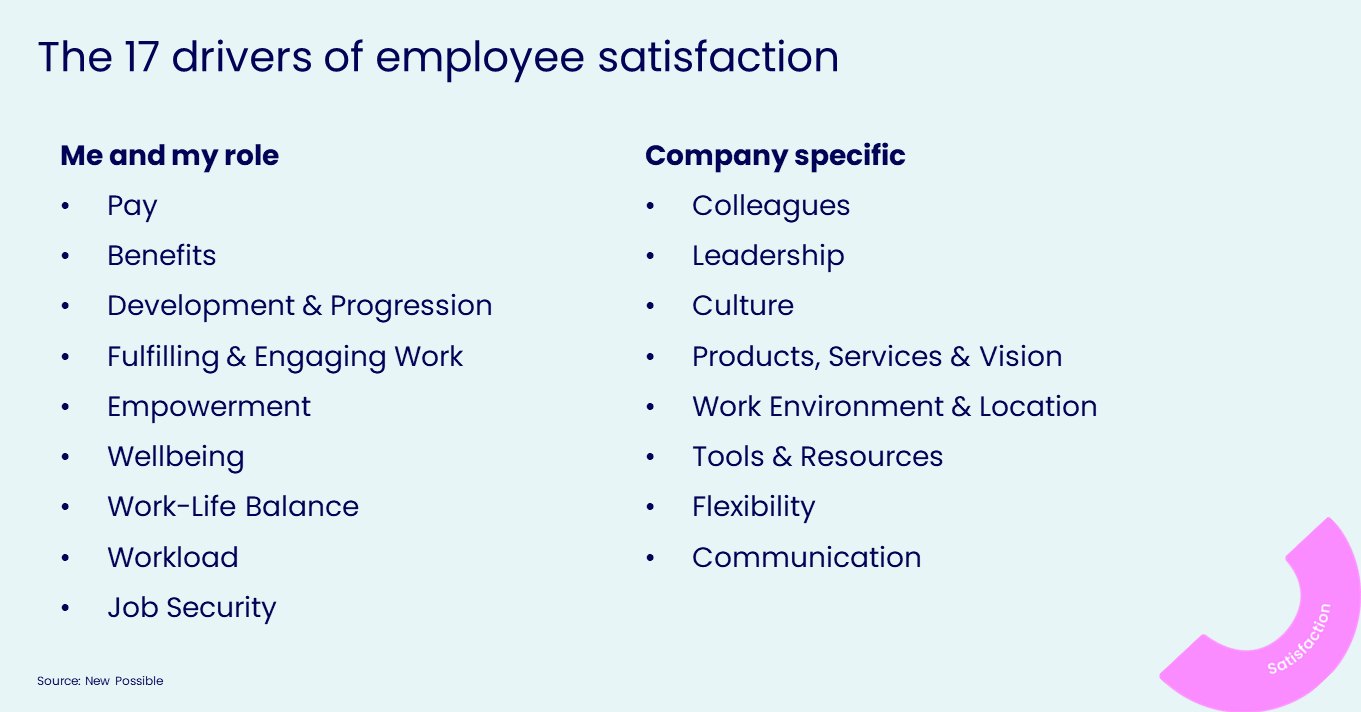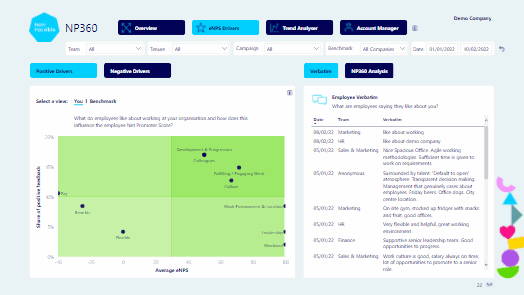Since its inception in the early noughties, Net Promoter Score has become a staple in the world of consumer insight. Described as ‘the one number you need to grow’, it’s been adopted by organisations globally to help measure customer satisfaction and loyalty.
However, customer satisfaction is often deep-rooted in the satisfaction of our employees. Satisfied employees are more likely to bring their best selves to work and that benefits every function of a business, from product development to customer service.
Apple was one of the first companies to really embrace this thinking by adapting a ‘Net Promoter for People’ across its 500 stores. This helped create a high-satisfaction environment that inspired employees to create better ways of working and connect with customers in a way that the high street hadn’t seen before.
‘Net Promoter for People’ is also known as the employee Net Promoter Score (eNPS) and our NP360 assessment uses eNPS to assess employee satisfaction, which is one of the seven themes we measure to deliver a truly holistic view of your people.
In this article we look at eNPS in more detail and explore how this simple metric can play an important role in shaping your organisation’s people strategy.
What is eNPS and how is it measured?
The employee Net Promoter Score measures how likely your people are to recommend you as a good place to work and can be found by asking:
‘On a scale of 0-10, how likely are you to recommend Company X as a place to work?’
Depending on how the employee scores you, they’ll fall into one of the following categories:
- 9-10 - Promoters: Happy and motivated
- 7-8 - Passive: Mostly happy, but not passionate enough to recommend
- 0-6 - Detractors: Dissatisfied and wouldn’t recommend
It’s calculated by subtracting the share of detractors from the share of promoters which is then multiplied by 100, to provide you with an eNPS on the scale of -100 to +100.

What is a good eNPS score?
An eNPS above 0 is good and indicates that there are more promoters than detractors. As a rule of thumb, above 50 is considered excellent and above 80 is world class.
However, every business is different. That’s why our insight dashboard enables you to contextualise your eNPS by comparing performance in line with industry type and demographics. You can also use our dashboard to benchmark teams and easily share insight across your organisation.
The satisfaction flywheel
When employees are satisfied, they’re enthusiastic about work, and this translates into more meaningful customer interactions, higher productivity and better retention. They’re also more likely to share feedback and ideas.
This triggers a flywheel effect, where improvements in service and product increase customer loyalty, which fuels sustainable business growth and creates more opportunities for employees to thrive.

How to increase eNPS
By itself, eNPS isn’t very actionable. Therefore, to understand what’s driving satisfaction, we need to ask employees what they think.
That’s why our NP360 assessment also asks the following questions:
- What do you like about working at Company X?
- What could be improved about working at Company X?
As you can imagine, the above invites almost infinite possibilities. From parking to pay, leadership to wellbeing, people have a lot on their minds! But what matters most to your people?
This is where we apply our AI, which analyses the responses to the above questions and identifies which of the following 17 drivers of satisfaction the employee is talking about:

Our AI then links these drivers to eNPS, and you can use our dashboard to quickly see which aspects of the people experience are having the greatest impact on the likelihood that you’re recommended as a good place to work.

Key Takeaways
eNPS is the ‘one number you need to grow’ when it comes to employee satisfaction, although by itself it doesn’t tell the whole story.
Understanding your employees likes and dislikes can help contextualise the score, but it’s also helpful to build a big picture view. For example, an employee may score a high eNPS and say that they’re very satisfied with pay, but how aligned are they to your organisation’s vision? Similarly, an employee may talk about a competitive environment, but what impact is that having on their working relationships and work-life balance?
That’s why our NP360 assessment doesn’t just look at satisfaction, but six other themes to develop a holistic and real-time view of your people.
New Possible is the next generation employee insight platform that helps to unlock the competitive advantage of your people. Book a demo to learn more or read about our mission.

